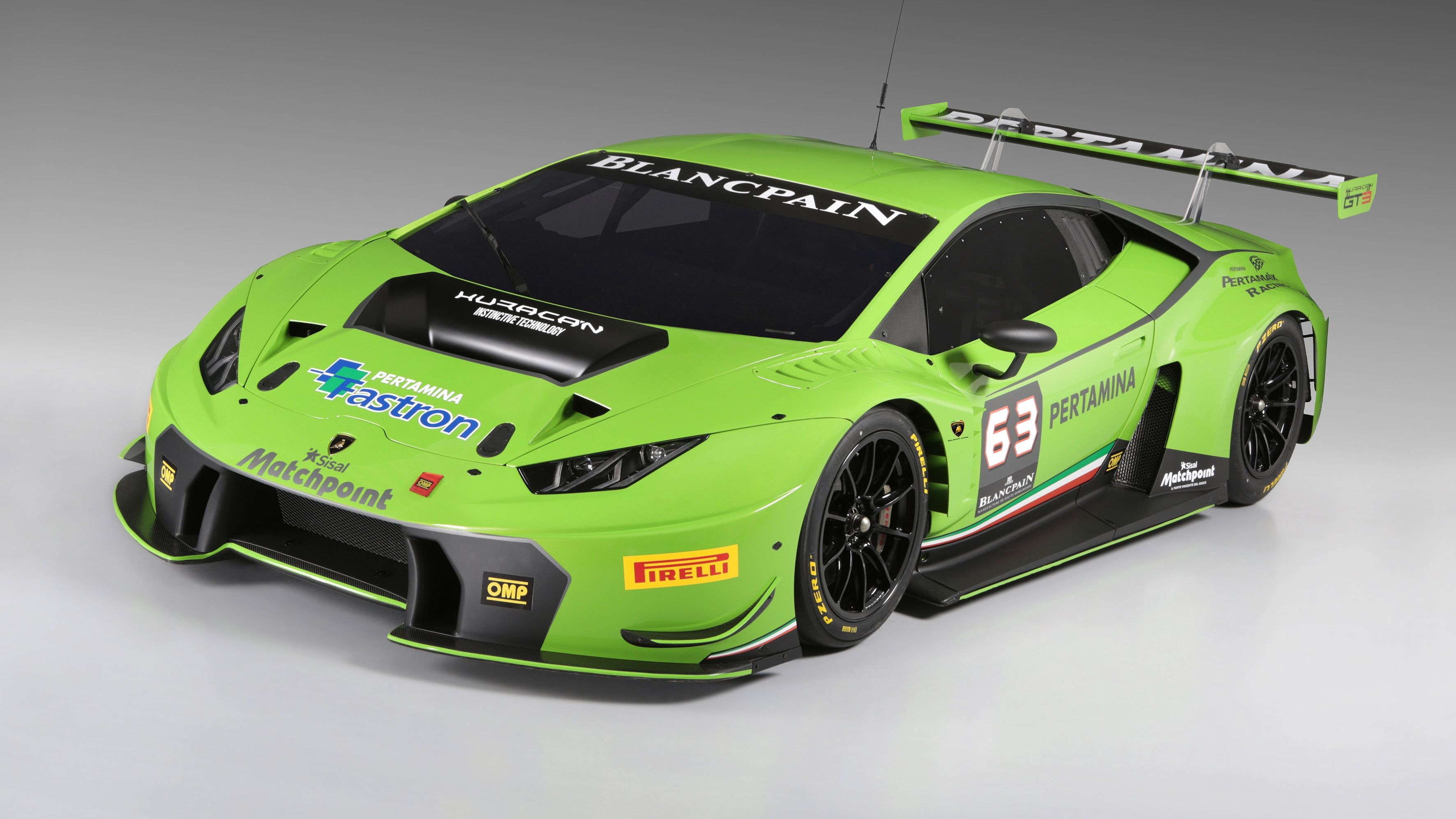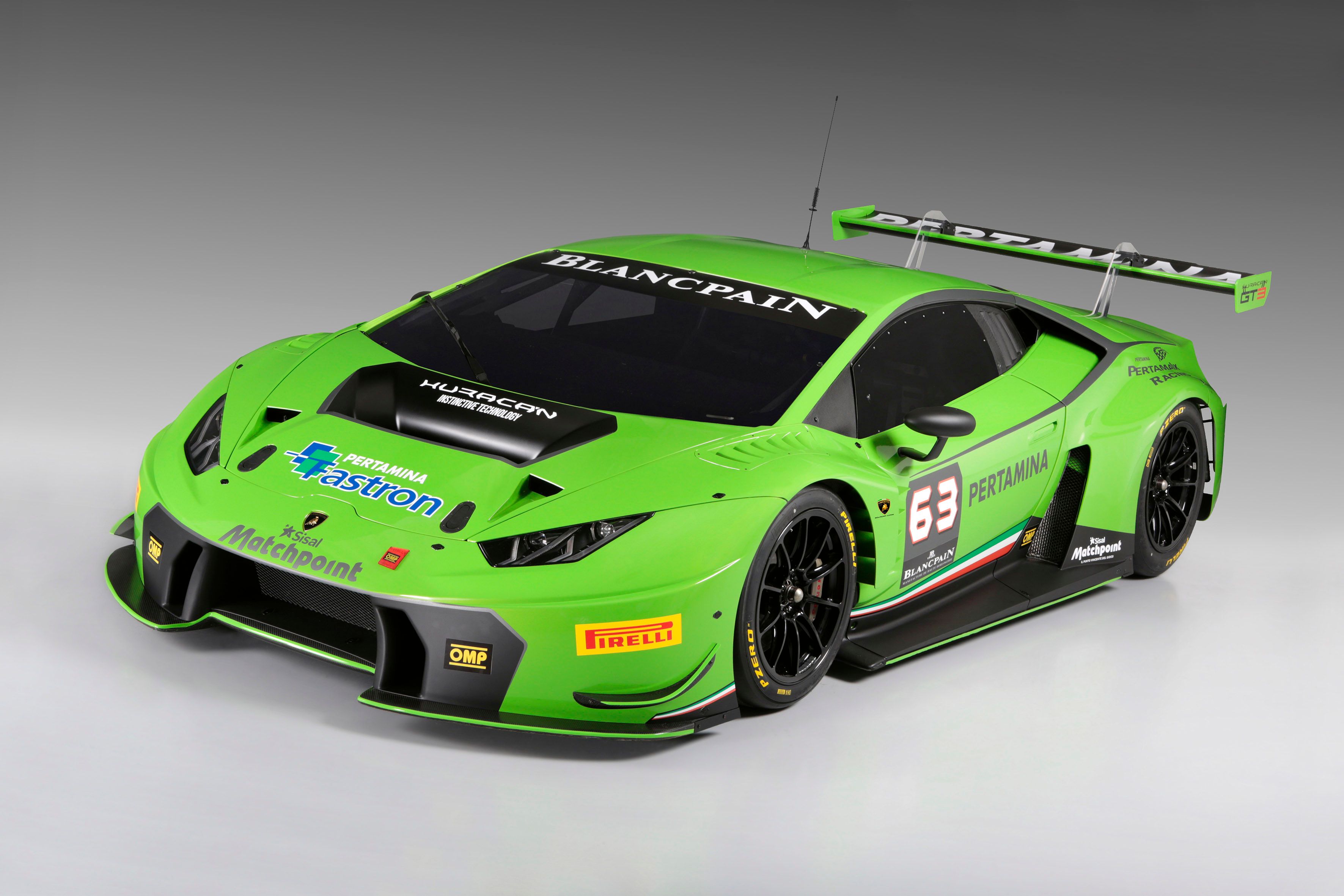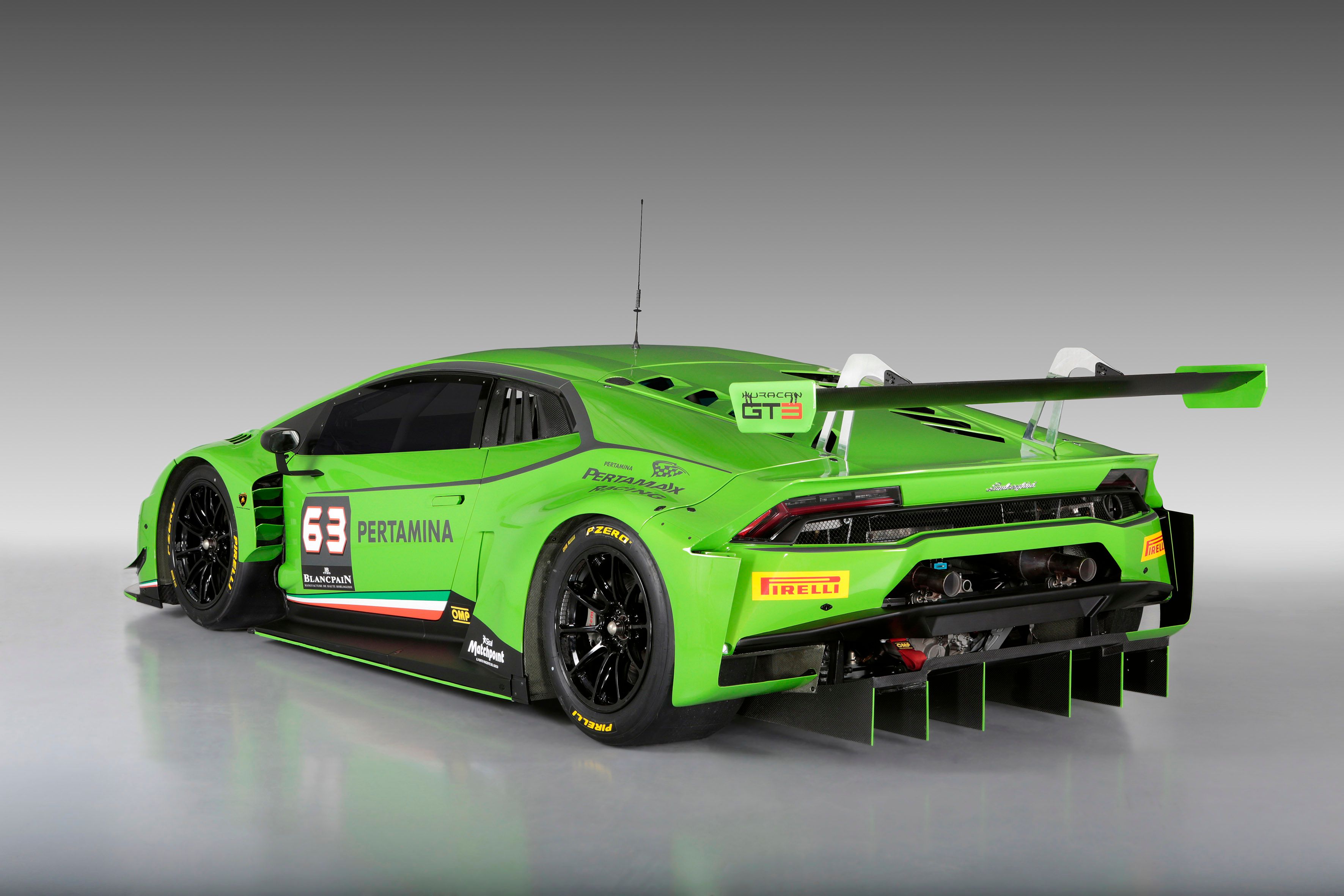When you think about prototype racing, you probably envision the mighty Audi racers that squashed everyone on their way to Le Mans glory in the noughties or, maybe, one of the many glorious machines to come out during the Group C days. Scroll back the years and, now, it seems we may be on the verge of a new resurgence of sports car racing, one led by the world's top supercar makers and the list may just grow further as Lamborghini looks at moving up from GT racing and into prototype racing.
While IMSA is the prime option for Lamborghini, the FIA WEC is not out of the question
Back in the early '60s when Automobili Lamborghini SpA. was founded in Italy out of Ferruccio Lamborghini's sheer dissatisfaction with one of Ferrari's long-legged grand tourers, the man himself claimed that Lamborghini will never go racing - that this isn't the company's goal.
The next few years could also see a new page in Lamborghini's sporting history begin to be written, that of Lamborghini as a competitor in the prototype ranks. While a Lamborghini prototype racer wouldn't be a first in and of itself, it would be the first time Lamborghini actually supported wholeheartedly such a program - be it customer-focused. At the time of writing, Lamborghini is known to have held talks with both IMSA and the ACO, but it's still early days as you probably won't see a car rolling and an announcement until at least 2021.
It has to be said, though, that Ratel was previously behind the "Venturi Gentlemen Drivers Trophy" and the success of that single-make series prompted Ratel to push for the creation of the BPR Global GT Series (Ratel is the 'R' in BPR) that spawned three successful seasons and led to the creation of the FIA GT Championship. The idea of single-make racing wasn't, however, when the Venturi Trophy and, subsequently, the Lamborghini Diablo Super Trofeo first appeared as Porsche had been organizing the Porsche Carrera Cup championship since 1986 and, even before that, Jochen Neerpasch formulated the layout for what would become the BMW M1 Procar Series that was the appetizer on Formula 1 weekends in 1979 and 1980.
Going back to our story, the company that turned the Diablo into a racing car wasn't linked to Lamborghini. In fact, this company, Reiter Engineering from Germany, kept building Lamborghini's racing cars up until the mid-2010s when Lamborghini moved its focus away from the second-generation Gallardo and started racing the Huracan which was the first creation of the in-house 'Corse' department. The Huracan remains to this day a very popular GT3-spec race car, and you can see it competing almost every weekend somewhere in the world (at the time of writing, for instance, there are multiple racing in both Super Trofeo and GT3 guise in Asia and in North-America).
What all this shows is that even companies that haven't built their business on the foundations of a racing pedigree as Ferrari did will still turn to motorsports sooner or later. Pagani raced the Zonda in the early-'00s for example, and you don't hear Pagani being much of a racing-focused company and, as we wrote, Koenigsegg is interested to return to racing after almost debuting a GT1-spec CC8S (called 'CCGT') 11 years ago. Like the Swedish boutique manufacturer, Lamborghini is also looking at a potential assault on the prototype ranks which would see the Italians tackle (almost) uncharted territory.
Five years later, Franz Konrad's team realized that its Porsche 962 that'd been using for a while was beginning to feel outdated. The decision was made to switch to a bespoke chassis - a decision ultimately prompted by the FIA's decision to bring Group C regulations close to those of Formula 1 by allowing in the C1 division only those cars that were powered by naturally aspirated 3.5-liter engines of F1 origin. This basically meant that turbocharged cars or other naturally aspirated ones but with a bigger displacement were second-class citizens as FIA still allowed them to race to the old fuel formula rules but made them use less and less fuel throughout 1990 to make it pointless to race such 'outdated' machinery. Konrad's car, called the KM-011 was powered by Lamborghini's 3.5-liter, naturally aspirated V-12 that was being used by Ligier and Modena in Formula 1 at the time. But the budget was limited and the KM-011 never even matched the performance levels of the old 962, let alone those of the all-conquering Peugeot, Mercedes-Benz, and Jaguar teams.
Now, if the wheels will start turning, Lamborghini ought to do things right. Half-hearted efforts are just a very efficient way in today's racing world so, if Lamborghini does go prototype racing, it must do it thoroughly - no cut corners, no flimsy budgets. And this is the main issue - money. Giorgio Sanna, Lamborghini's Head of Motorsport, spoke openly with Sportscar365.com about the company's interest in "facing new challenges." "If we talk about DPi or Hypercar or other top categories, there are challenges that we love," Sanna said. "A few years ago, we had the wish to compete in GT3 at a high level. It’s what we’ve done with success now we have different wishes and targets, so we’ll see what will be possible to do."
So why is money the issue? Because, when you want to do things right, you have to let the budgets run a bit loose and that's not how Lamborghini does things. Remember when Porsche, Toyota, and Audi were spending about $200 million per season battling at the peak of the hybrid LMP1 era just a few years ago?
At the same time, in North America, the current DPi formula that has been embraced by Cadillac, Mazda, Acura, and Nissan and produces great racing (with the application of Balance of Performance to somewhat even things out) is far cheaper with budgets under the $10 million mark. However, in 2022, a new set of regulations for the DPi category will come into effect.
While some 40 representatives from all over the industry including team owners and people representing manufacturers that currently compete in IMSA-sanctioned races and other interested parties were in attendance at the most recent meetings, not everyone is happy with how 'DPi 2.0' shapes up to be. Wayne Taylor, the boss of Wayne Taylor Racing, the team that has swept the floor in 2017 in the IMSA Weathertech Sportscar Championship, voiced his negative opinion on the rising costs. "We’re spending $5.6 million for ten races, which is absolutely absurd, Taylor said. "We are customers just like every other Cadillac . But we’re racing against Honda, which is Penske and factory, and we’re racing against Mazda, which is factory with Joest."
Lamborghini acknowledged, through the voice of Sanna, the necessity of using hybrid systems as they're a way to move towards full electrification in racing. "We have very good expertise in the low-voltage in terms of technology in the company," he pointed out before adding that the powers that be must focus "on the budget cap and the budget needed for this kind of technology."
Sanna also pointed out that "we are not looking, at the moment, for a factory program effort like what is LMP1 today. In DPi, it would be possible to do it . We already have a good example . We would like to make it as a customer racing program," he said. But if the budgets will grow in such a way that proper backing from a manufacturer is needed if the said manufacturer wants the teams that run its product to succeeded - as Wayne Taylor suggests it's already the case - then Lamborghini may be in trouble from the get-go.
Still, the 'DPi 2.0' formula will undoubtedly be cheaper than the 'Hypercar Prototype' one, if for no other reason than that IMSA only organizes races in North America while the FIA World Endurance Championship includes 'world' in its name and you know what that means. The fact that all of the IMSA races take place in North America also makes sense for Lamborghini from a marketing standpoint as North America remains Lamborghini's biggest market - 1,595 Lamborghinis have been sold in the U.S. alone in 2018 compared to 1,679 units in all of Europe.
“At the end, motorsport is a technology and marketing tool for the company. So we have to do what the company expects that is best to do," concluded Sanna who said Lamborghini will take its time before making a decision but, if the ball starts rolling, don't be surprised to see Wayne Taylor - who wants to find a partnering manufacturer for the 'DPi 2.0' formula - racing a Lamborghini. His team is already campaigning Huracan Super Trofeos in the Super Trofeo North America series.
Who else is interested in prototype racing right now?
If Lamborghini may not come to Le Mans in the next few years with a prototype, then who will? We already know that Aston Martin is committed to running a Hypercar-spec Valkyrie, Toyota will build a prototype too, as will Glickenhaus and ByKolles Racing. McLaren is also an interested party, but Zak Brown & Co. are yet to come forth with an announcement. Is there anybody else interested to jump aboard?
Well, Ferrari is not although the Italian giant did attend some early meetings with the FIA and the ACO when the 'Hypercar Prototype' rules were beginning to take shape. Ford also took part in those early meetings but, with the GT's racing career coming to an end at the end of the 2019 season (at least in the factory's hands, that is), we will most likely see Ford return to IMSA rather than tackle a global program in the FIA WEC. Bentley, however, has taken a 'wait-and-see' approach. The company - that last won Le Mans in 2003 - wants to be back, as Brian Gush told Racer.com earlier this month. Alpine would also be interested to move up from LMP1, but this is a more distant possibility.
Reinke's opinion on Audi's need to differentiate itself in terms of technology (that will be hard to achieve in a formula that allows both hybrid and non-hybrid cars to race on, supposedly, equal terms) is echoed by Oliver Hoffmann, who heads Audi's division that oversees the build of road-going sports cars like the R8. "If they would have opted for ‘GTE plus’ instead of ‘hypercar’ regulations, then it would be a different story," he said referring to one of the alternatives to the 'Hypercar Prototype' rules that involved massively updating GTE-spec cars to race at the sharp end of the field and take overall wins ahead of LMP2 cars.
But this doesn't mean there aren't more people interested. ORECA, for instance, wants to find an OEM to work with for a hypercar program and they may find one as there are companies like Dendrobium that are vying to get in the game.
"I’ve just been reading the ACO regulations for 2020 and 2021 , and the idea of a hybrid solution is actually quite appealing,” he said to Top Gear. Then there is Ginetta who will return to the LMP1 ranks when the 2019-2020 FIA WEC season kicks-off this fall and they may also be part of the picture in the future as are the other current chassis builders in LMP1 and LMP2 - Dallara and Ligier. At the end of the day, we have to wait and see how much the governing bodies (IMSA on the North American side and FIA/ACO on the global side) expect manufacturers/teams to spend to compete before we can talk more about who's in and who's not in.
Further reading
Five Interesting Stories From The 2019 24 Hours of Le Mans



